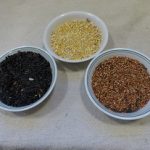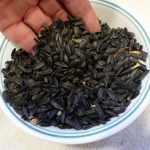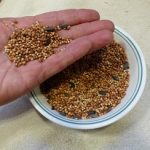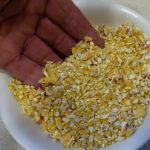Cold weather in the northern hemisphere and the Holiday Season everywhere are upon us and many gifts for bird lovers fill store shelves. But, shopping for seeds to fill the backyard feeder can be confusing and even frustrating. Many types of seed and mixes are for sale. Some blends are designed to attract specific species, like cardinals, while others target a diversity of birds. Cheap blends appeal mostly to house sparrows and blackbirds, species most people prefer to not attract.
Winding Pathways suggests keeping seed buying simple. We have a favorite seed, one we avoid, and one that we use in a special way. We rarely buy cheap mixes that song birds really do not like and that are sold in big box, chain and grocery stores at inflated prices. Farm stores often sell better mixes at lower cost. Neither of these types of stores have knowledgeable staff to help new comers to winter bird feeding. Specialty bird feeding stores offer the highest quality seed and staff up-to-date in what song birds feed on. And, yes, you pay a bit more – and we find it worth the cost. Less wasted seed and higher satisfaction for homeowners and the birds!
THE BEST SEED FOR WILD BIRDS
Of the many outstanding seeds for feeding birds we like black oil sunflower the best. It’s relatively inexpensive and devoured by chickadees, titmice, nuthatches, woodpeckers, cardinals, and many other species. We don’t mind that birds drop hulls to the ground but for people who dislike this mess, hulled sunflower seed can be purchased and is excellent. It is kernels of larger culinary sunflower seeds, sometimes called gray stripe seed. Hulls have been removed and seed is much more expensive but loved by birds. Most sunflower seeds are produced on farms in the Dakotas and Minnesota.
THE WORST SEED
The worst seed is Milo. It is a common ingredient in cheap mixes and sometimes is sold as “bird seed.” Milo is grown on arid land in the Great Plains and is mainly used for livestock feed. The young plant looks like corn but unlike corn its seeds form at the top of the plant. Few birds like the astringent seeds, although they will sometimes eat it if nothing else is available and they are hungry. Less desirable species, like house sparrows and blackbirds will eat it. Milo seeds are round, slightly reddish, and about twice the size of somewhat similar millet. Try to avoid it.
IN BETWEEN SEEDS
An excellent inexpensive seed that will be eaten by many birds is cracked corn. Desirable birds prefer sunflower seeds, but we often sprinkle some cracked corn on the ground to keep sparrows and wild turkeys happy and, hopefully, away from our sunflower seed. Another seed of “in between” value is millet. These are tiny round white or yellowish seeds often found in inexpensive mixes. Mourning doves, juncos and other ground feeders enjoy eating it. So do house sparrows.
Learning to identify seeds helps a customer purchase the best seed at the lowest cost. Reading labels helps as most manufacturers list the contents of their seed packages. Happy Holidays to you and the birds you love to feed!





